The Earth we know is a planet covered by vast lands and oceans.
However, recent scientific discoveries suggest the possibility of a massive ocean existing within the Earth’s interior.
It sounds like something out of an urban legend, but advancements in Earth science have given this idea newfound credibility.
Where is this ocean, how was it formed, and what significance does it hold?
In this article, we will delve into the latest scientific findings about the Earth’s inner ocean, explore its connections to urban legends about underground worlds, and consider how this discovery could impact our future.
- The mystery of a massive ocean discovered beneath the Earth’s surface
- How science uncovers the existence and mechanisms of water within the Earth
- Connections between the “underground world” in urban legends and this discovery
- Potential implications of the Earth’s inner ocean for the planet’s future
- The Discovery of an Ocean Inside the Earth
- The Mechanism Behind the Earth’s Inner Ocean, as Explained by Science
- The Subterranean World Connected to Urban Legends
- Insights into the Future Revealed by the Earth’s Inner Ocean
- The Future Possibilities Unveiled by the Earth’s Inner Ocean
The Discovery of an Ocean Inside the Earth
The discovery of an ocean existing within the Earth’s interior has shocked the scientific community.
In 2014, scientists identified a mineral called “ringwoodite” in the Earth’s mantle.
This mineral has water-retaining properties, suggesting the presence of a vast water reservoir deep within the planet.
Additionally, the water held under immense pressure in the mantle is believed to exist in a form unlike the ocean water we are familiar with.
Scientific Evidence of Subterranean Water
The discovery of ringwoodite has been key to understanding how and where an internal ocean is formed and sustained.
This mineral, capable of holding water under high-pressure conditions, provides direct evidence of a hidden ocean within the Earth’s mantle.
The finding has expanded the understanding of the Earth’s water cycle, showing that it extends beyond the surface to the planet’s deep interior.
Further research is expected to uncover the role this subterranean water plays in Earth’s geological processes.
The Background and Impact of the Ringwoodite Discovery
Ringwoodite forms only under the extreme pressures found deep within the Earth.
Its discovery opened new horizons in Earth sciences, shedding light on how water exists within the planet.
This mineral is a critical piece in understanding the Earth’s material cycle.
Its existence highlights the complexity and interconnectedness of Earth’s systems.

The Untapped Potential of the Inner Ocean
The existence of an ocean deep within the Earth reveals the incredible complexity of our planet.
This discovery not only deepens our understanding of Earth’s water resources and their evolution but also provides new perspectives in Earth science.
Furthermore, the impact of subterranean water on tectonic movements and earthquakes raises compelling questions.
This hidden ocean serves as a reminder of the many mysteries the Earth still holds.
The Role of Subterranean Water in Earthquakes
Subterranean water may play a crucial role in earthquake activity.
For instance, changes in water pressure along fault lines could act as triggers for earthquakes.
Research on the movement and influence of these waters is ongoing, offering potential applications in earthquake prediction and disaster mitigation.
These studies provide critical insights into the Earth’s dynamic processes.
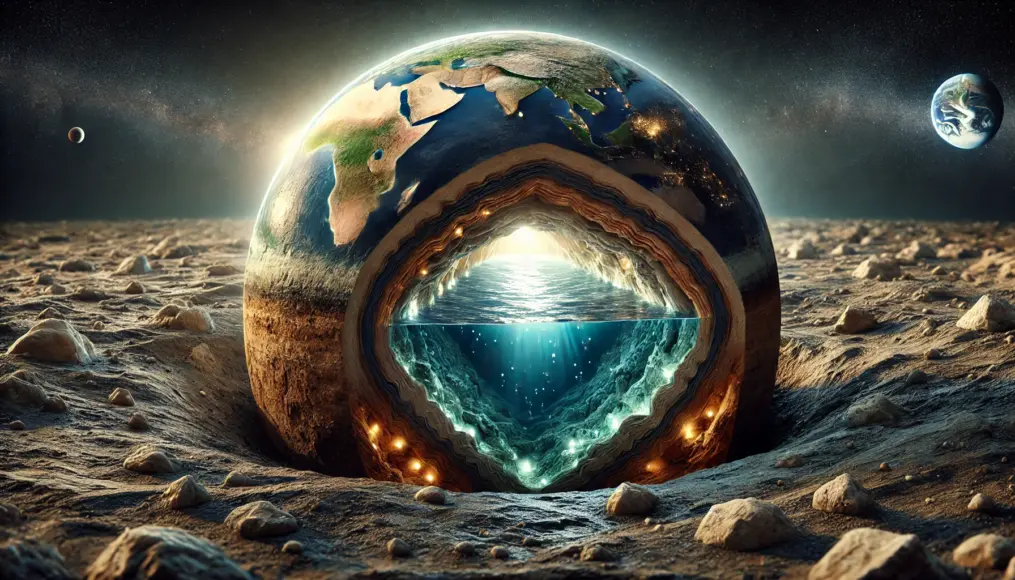
The Connection Between Water and Tectonic Movements
Water within the Earth’s interior is thought to influence plate movements and magma circulation.
For instance, magma containing water can significantly affect the scale and behavior of volcanic eruptions.
Additionally, the presence of water may reduce friction between tectonic plates during movement.
This highlights the importance of subterranean water in understanding Earth’s geological activity.
Implications for Other Planets and Earth’s Uniqueness
The presence of an ocean within the Earth also raises the possibility of similar phenomena occurring on other planets.
For example, Jupiter’s moon Europa and Saturn’s moon Enceladus are believed to harbor subsurface oceans.
These extraterrestrial oceans are vital research targets in the search for alien life.
By comparing Earth with these celestial bodies, we can better appreciate the uniqueness of our planet.
Comparing Earth’s Inner Ocean with Europa’s Subsurface Ocean
Europa, an ice-covered moon of Jupiter, is thought to have a liquid ocean beneath its surface.
While Earth’s inner ocean and Europa’s subsurface ocean differ in environment and formation, they share many intriguing similarities.
For instance, both serve as key areas for studying the role of water in sustaining life.
These comparisons are crucial for advancing the search for life beyond Earth.
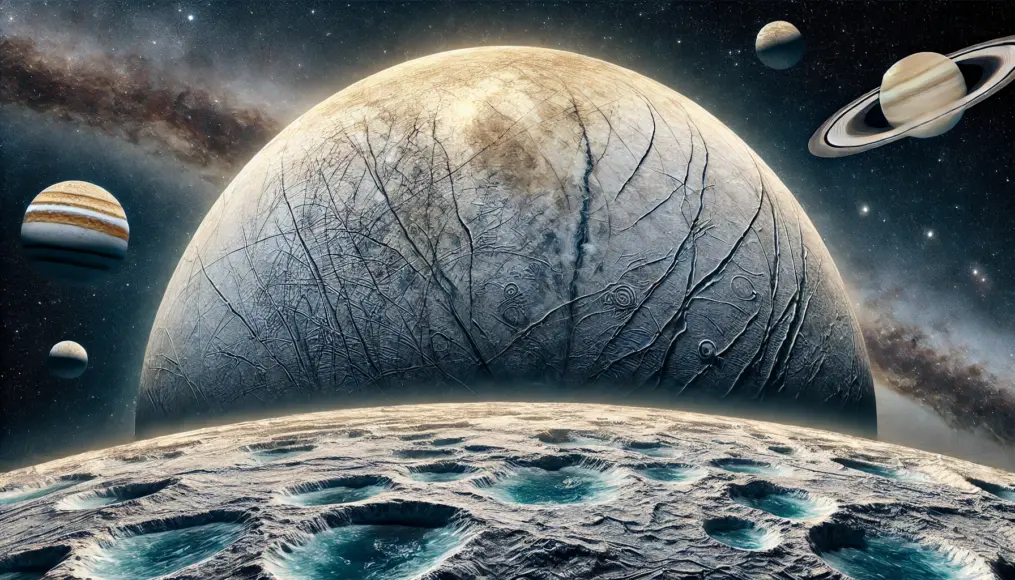
The Mechanism Behind the Earth’s Inner Ocean, as Explained by Science
The mechanism of the ocean existing within the Earth’s interior is fascinating from a scientific perspective.
Water is absorbed into minerals within the Earth’s mantle, where it remains in a unique form under extreme heat and pressure.
As a result, the Earth’s water cycle extends beyond the surface into a complex system reaching deep into its interior.
This structure plays a crucial role in the Earth’s evolution and ongoing geological processes.
The Water Cycle Within the Earth
The water cycle within the Earth spans from the surface to its deep interior.
Seawater is subducted into the Earth’s interior through tectonic plate movement, where it becomes trapped in minerals.
Later, volcanic activity and eruptions release this water back to the surface in a continuous cycle.
This process has a significant impact on sustaining life and shaping Earth’s dynamic systems.
The Relationship Between Water Cycle and Subduction Zones
At subduction zones, seawater is carried deep underground and incorporated into minerals.
This water remains stored for extended periods and may return to the surface through tectonic processes.
The cycle ensures the stability of Earth’s water resources and highlights its critical role in sustaining life.
Additionally, hypotheses connect this cycle to the origins of life, making it a crucial subject of ongoing research.
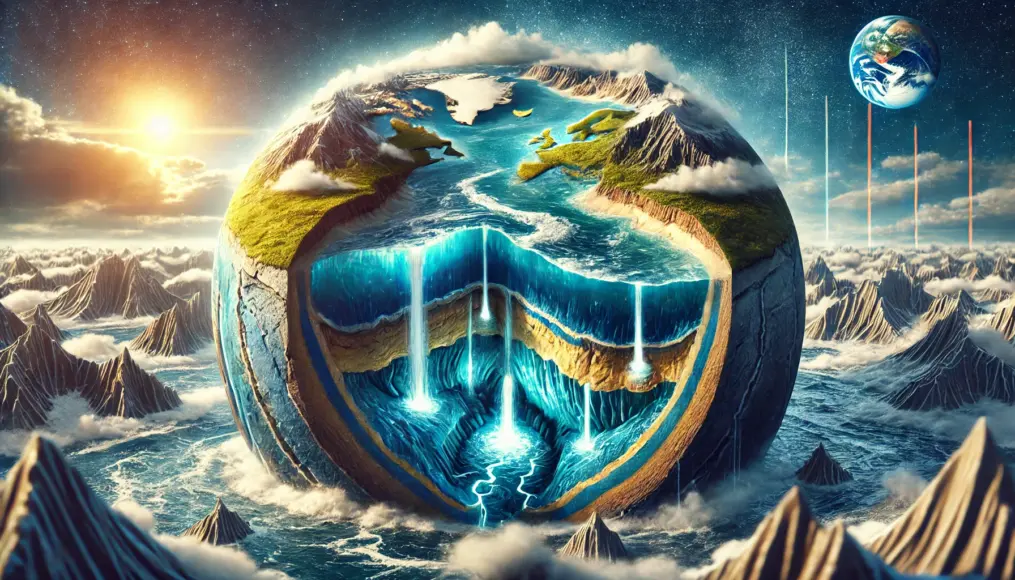
Water Release Through Volcanic Activity
Water stored underground can be released into the atmosphere through volcanic activity.
This phenomenon is observed as water vapor in volcanic gases and eruption materials.
Understanding this process is essential for comprehending the surface-level manifestations of the Earth’s water cycle.
Volcanic activity’s influence on water dynamics provides valuable insights into Earth’s interconnected systems.
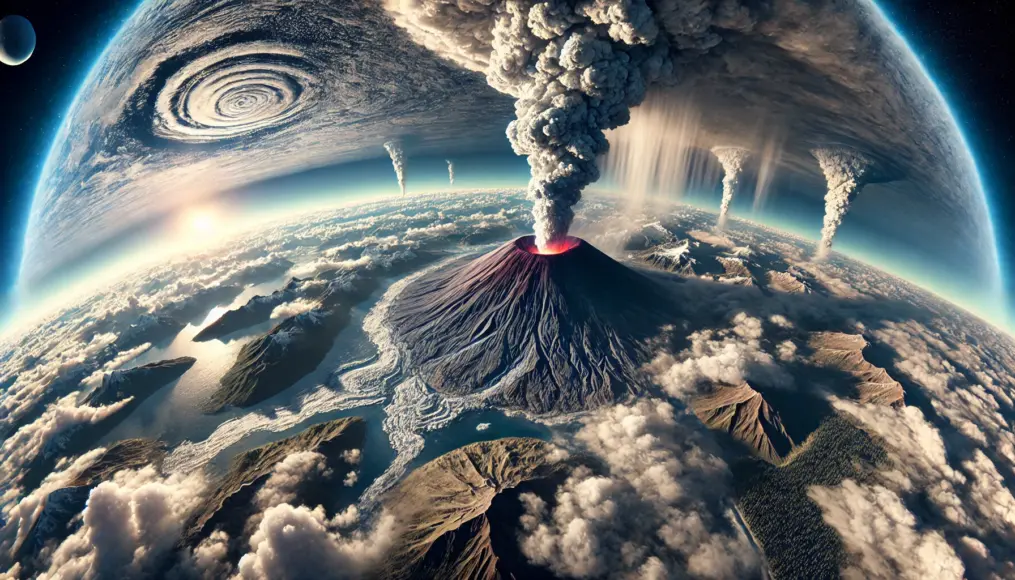
Water Retention in the Mantle
Minerals within the Earth’s mantle have the unique ability to retain water under high-pressure conditions.
Ringwoodite and bridgmanite are key examples of such minerals, capable of holding water at a molecular level.
This capacity suggests that the amount of water within the Earth’s interior could rival that of the surface oceans.
Understanding this mechanism is pivotal to grasping the dynamics of Earth’s deep interior.
The Importance of Ringwoodite and Bridgmanite Structures
Ringwoodite, which contains water at a molecular level, is crucial for water retention in the mantle.
Similarly, bridgmanite’s water-holding ability has influenced the Earth’s evolution over time.
Studying these minerals provides a window into Earth’s unexplored depths and reveals new scientific frontiers.
Advances in mineralogy and geology will unlock further secrets of Earth’s past and future.
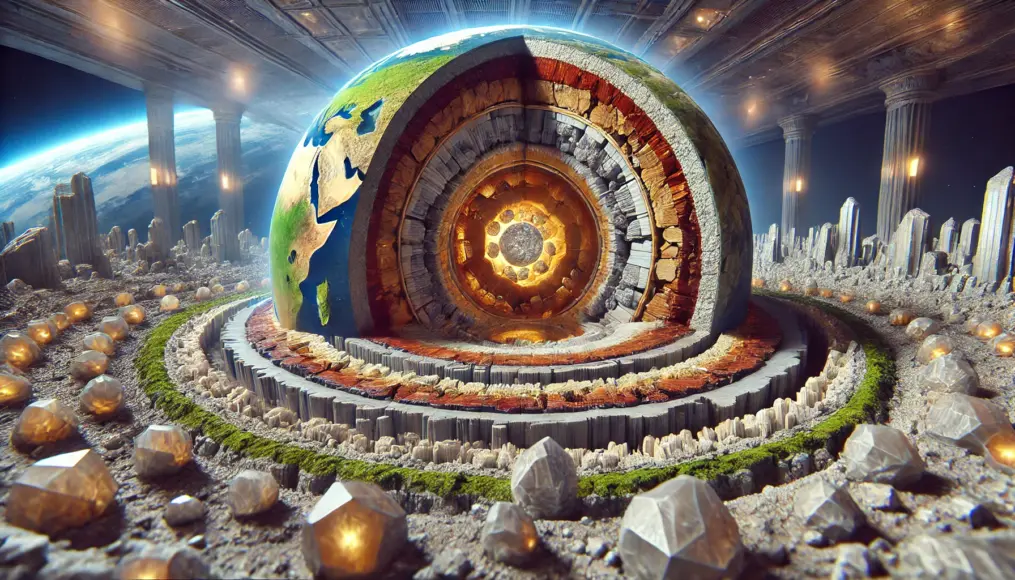
The Relationship Between Water and Tectonic Movements
Water and tectonic movements are closely interconnected.
In subduction zones, underground water is believed to reduce friction between tectonic plates.
This reduction in friction can influence the frequency and magnitude of earthquakes and volcanic activity.
Understanding this relationship is vital to deciphering Earth’s geological dynamics.
The Role of Water in Reducing Plate Boundary Friction
Underground water reduces friction at plate boundaries, directly affecting seismic activity.
Lower friction facilitates plate movement, potentially impacting earthquake frequency and behavior.
Studying this phenomenon can enhance earthquake prediction and mitigation strategies.
Tracking water movement and its effects will become increasingly important in geological research.
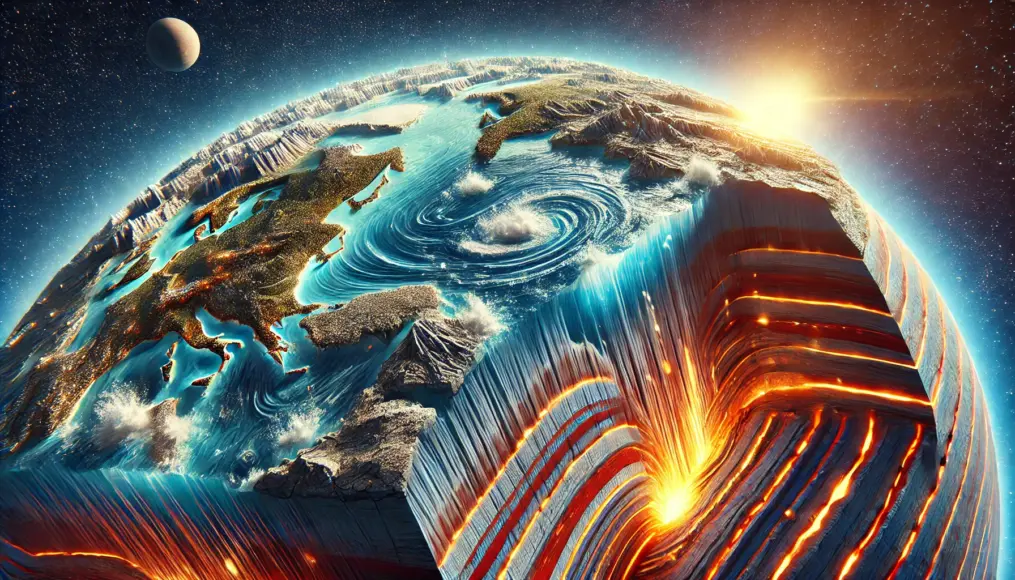
The Potential of Water Within the Earth
Water within the Earth holds potential far beyond its geological implications.
For example, its impact on Earth’s temperature and magnetic field remains an area of active investigation.
Additionally, it may serve as a clue to the origins of Earth’s water and its connection to the cosmos.
This unexplored domain still conceals many mysteries waiting to be unraveled.
The Connection Between Earth’s Magnetic Field and Water
Water within the Earth may contribute to the formation and maintenance of the planet’s magnetic field.
By interacting with electrically conductive materials, water could influence the Earth’s geodynamo.
If proven, this hypothesis could offer a new explanation for the origin of Earth’s magnetic field.
Understanding water’s role could illuminate the intricate workings of our planet.
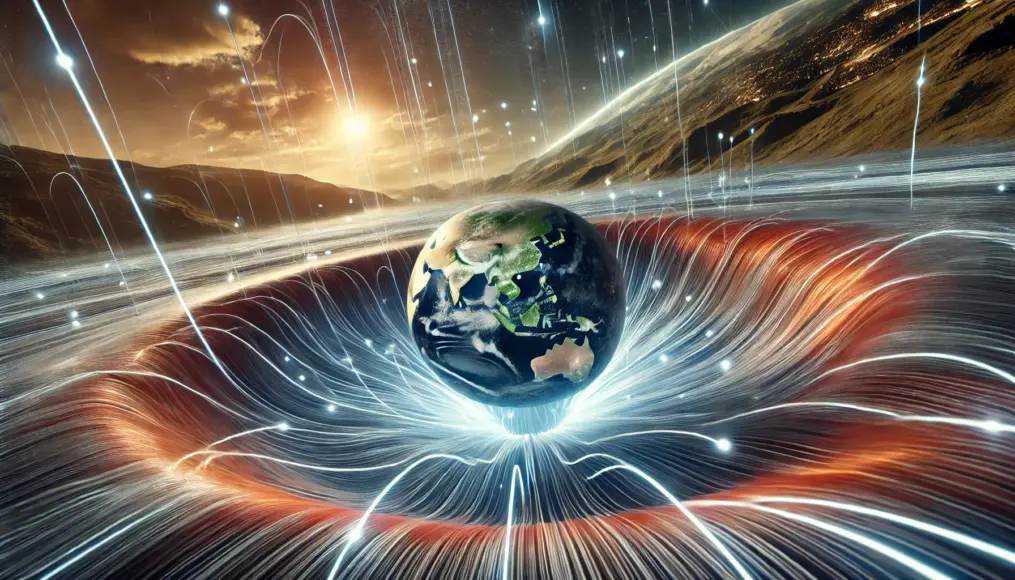
The Subterranean World Connected to Urban Legends
While the existence of oceans within the Earth’s interior is being scientifically confirmed, this discovery also intertwines with numerous urban legends.
Ancient tales of underground worlds and unconfirmed beings intersect with modern science, creating a fascinating narrative.
This topic captivates the curiosity of many, offering an intriguing intersection of science and imagination.
Urban legends not only expand our imagination but also serve as potential starting points for new scientific investigations.
The Shambhala Legend and the Hidden Paradise
One of the most famous urban legends related to the subterranean world is Shambhala.
Shambhala, mentioned in Tibetan Buddhist teachings, is a “hidden paradise” believed to exist underground.
It is said to be inhabited by advanced beings and remains completely isolated from the surface world.
With scientific discoveries pointing to water within the Earth, this legend is being revisited with new perspectives.
Shambhala’s Message for Humanity’s Future
The Shambhala legend is believed to hold clues for humanity’s moral and spiritual growth.
It suggests that advanced beings from this underground paradise may be trying to communicate with the surface world.
Such legends offer philosophical insights that science alone cannot provide.
They inspire us to explore the unknown and consider the possibilities that lie ahead.

The Existence of Subterranean Beings and Sightings
Urban legends also speak of beings living beneath the Earth’s surface, separate from humanity.
These subterranean beings are said to possess advanced knowledge and technology, living hidden from the surface world.
According to accounts and folklore, they dwell in vast underground caverns or oceans, rarely interacting with the surface.
While the scientific basis of these stories remains uncertain, they spark the imagination and remain an intriguing topic.
Evidence Supporting Subterranean Beings
Legends of subterranean beings gain credibility from discoveries of unexplored caves and underground structures.
Deep-sea and underground explorations often reveal mysterious formations that could hint at such beings’ existence.
Whether these phenomena are mere coincidences or part of a larger mystery is open to interpretation.
This uncertainty is what makes urban legends so captivating and enduring.
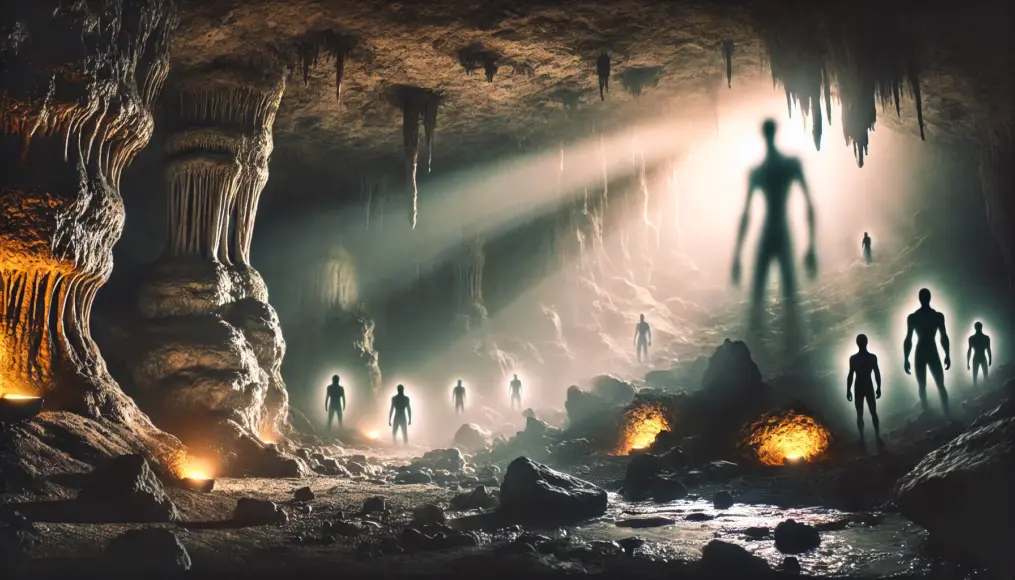
The Mystery of Agartha and the Hollow Earth Theory
Agartha is another prominent urban legend linked to the subterranean world.
This legend describes a vast hollow Earth where a unique civilization has developed.
The cities of Agartha are said to harbor advanced technologies and knowledge unseen on the surface.
The discovery of Earth’s inner oceans may provide scientific support for this hollow Earth theory.
Scientific Theories Related to Agartha
The Agartha legend is often reconsidered in light of modern scientific discoveries.
For instance, observed voids and water in Earth’s depths could hint at remnants of an underground civilization.
These theories provide a platform where science and legend merge, opening doors to new possibilities.
Future exploration technologies may one day uncover the truths hidden within these mysteries.
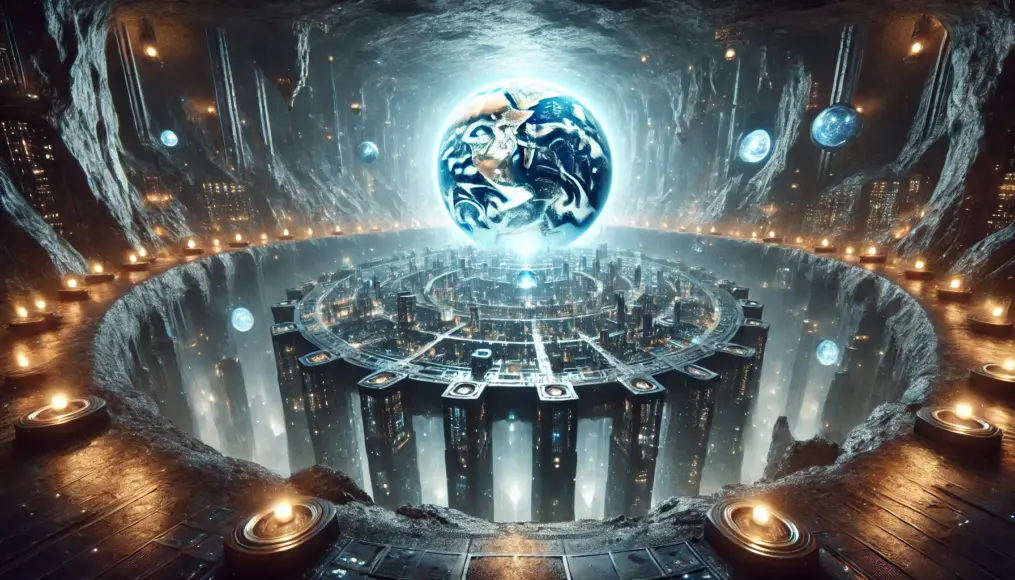
The Future Revealed by Science and Legends
Advancements in science are giving urban legends about the subterranean world a sense of reality.
Exploring how Earth’s inner water and voids relate to tectonic activity, earthquakes, and life’s origins is crucial.
At the same time, these legends continue to inspire curiosity and drive the exploration of uncharted territories.
The fusion of science and urban legends could lead to groundbreaking discoveries and new inspirations.
New Interpretations of Urban Legends Through Science
Urban legends evolve with scientific advancements, offering fresh interpretations.
What was once considered pure fantasy, such as underground paradises or civilizations, is now a subject of scientific inquiry.
This progression allows legends to transition from mere myths to potential clues for solving real-world mysteries.
The intersection of urban legends and science opens a vast array of possibilities for the future.
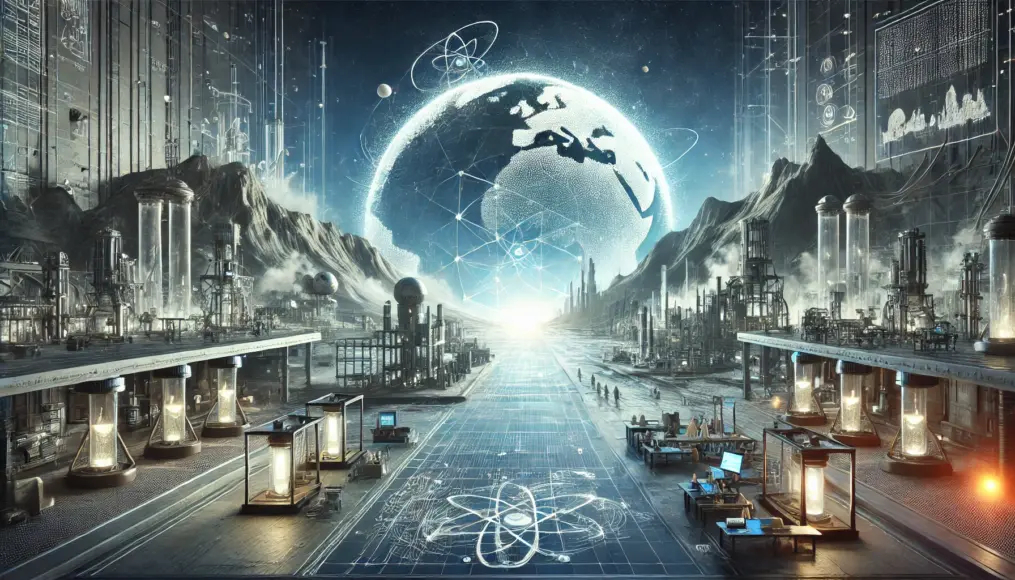
Insights into the Future Revealed by the Earth’s Inner Ocean
The discovery of an ocean within the Earth’s interior suggests numerous possibilities and impacts for the future of our planet.
This previously unknown internal water resource may play a significant role in our lives and the Earth’s environment.
This finding is not only an inspiration for science and technology but also a driving force for building a sustainable society.
Furthermore, the quest to explore unknown territories could become a catalyst for advancing future generations.
The Potential of the Earth’s Internal Water as a Resource
The inner ocean of the Earth may be utilized as a water resource in the future.
Studying how this water contributes to the Earth’s surface water cycle and its long-term availability could open doors to sustainable water management.
Additionally, the presence of underground water could provide new solutions for addressing droughts and climate change.
At the same time, careful discussions are needed about the risks of overexploiting this resource.
The Need for Sustainable Water Resource Management
While the use of underground water progresses, sustainable management becomes essential.
Unregulated usage could lead to the depletion of underground water and destabilization of the Earth’s crust.
Therefore, collaboration between scientists and policymakers to explore safe and efficient utilization methods is vital.
This approach holds the key to protecting the Earth’s future environment.
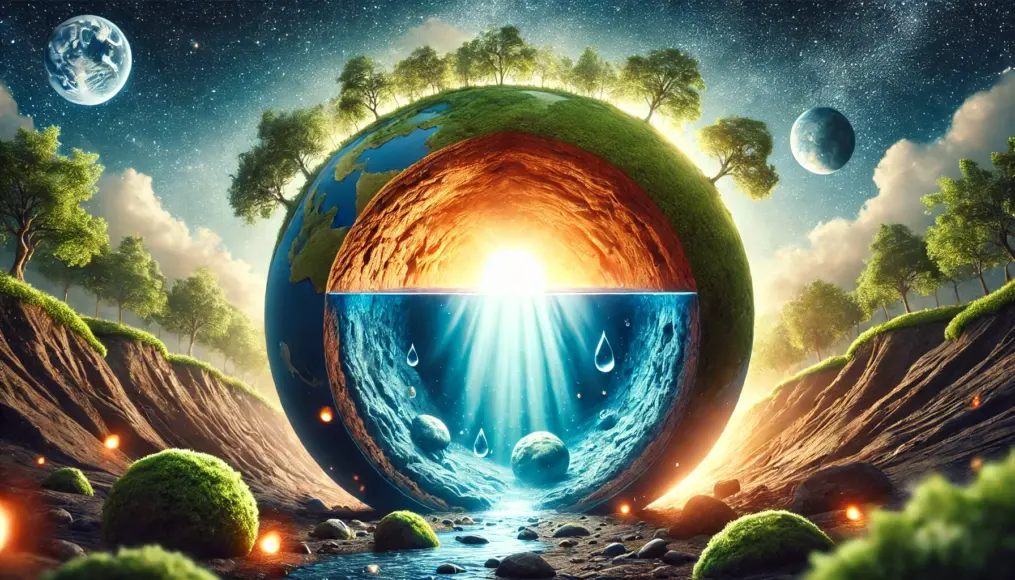
The Impact on Tectonic Activity and Disaster Prevention
The water within the Earth’s interior plays a crucial role in predicting and mitigating natural disasters.
Research is ongoing to uncover how the movement of underground water influences earthquakes and volcanic activity.
These studies have the potential to generate new technologies and knowledge for reducing disaster risks.
Additionally, they are expected to contribute significantly to the advancement of Earth sciences.
The Role of Underground Water in Earthquake Prediction
Research is being conducted on how underground water impacts the mechanisms of earthquakes.
In particular, the movement of water is believed to influence friction between tectonic plates.
Using this information could improve earthquake prediction accuracy and reduce the potential for damage.
Water-based predictive technologies may become a critical tool in future disaster prevention.
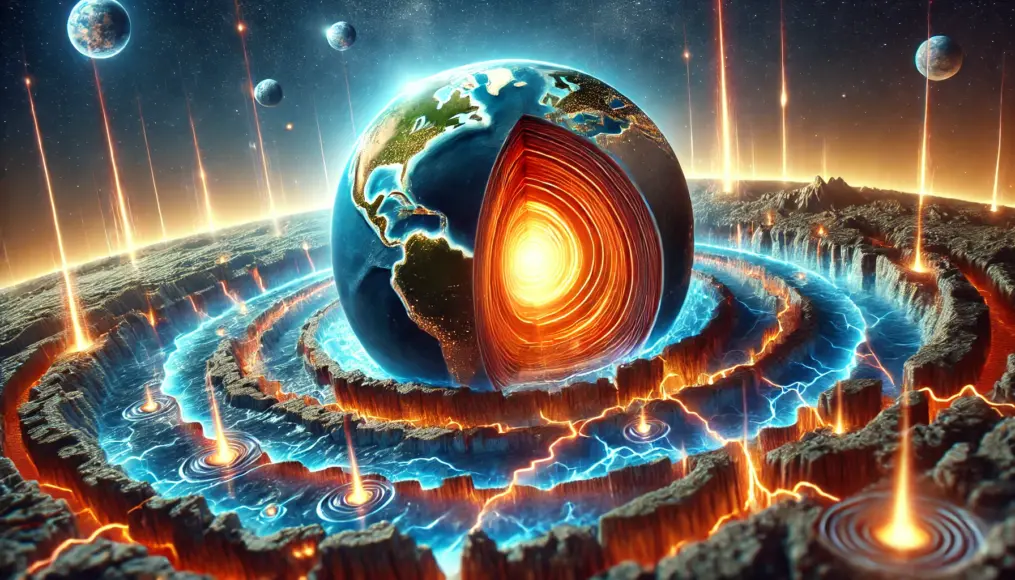
Applications for Extraterrestrial Exploration
The discovery of Earth’s inner ocean is a key to exploring the possibility of subsurface oceans on other planets and moons.
For example, Jupiter’s moon Europa and Saturn’s moon Enceladus are believed to harbor subsurface oceans.
Applying the knowledge gained from Earth to space exploration may advance the search for extraterrestrial life.
This could deepen our understanding of the universe as a whole.
Implications for the Search for Extraterrestrial Life
The existence of subsurface oceans suggests that life could be widespread across the universe.
In particular, the subsurface oceans on Europa and Enceladus may provide environments conducive to life.
Technologies developed based on Earth’s research findings are being used to explore these celestial bodies.
This research could become a key to uncovering the origins of life in the universe.
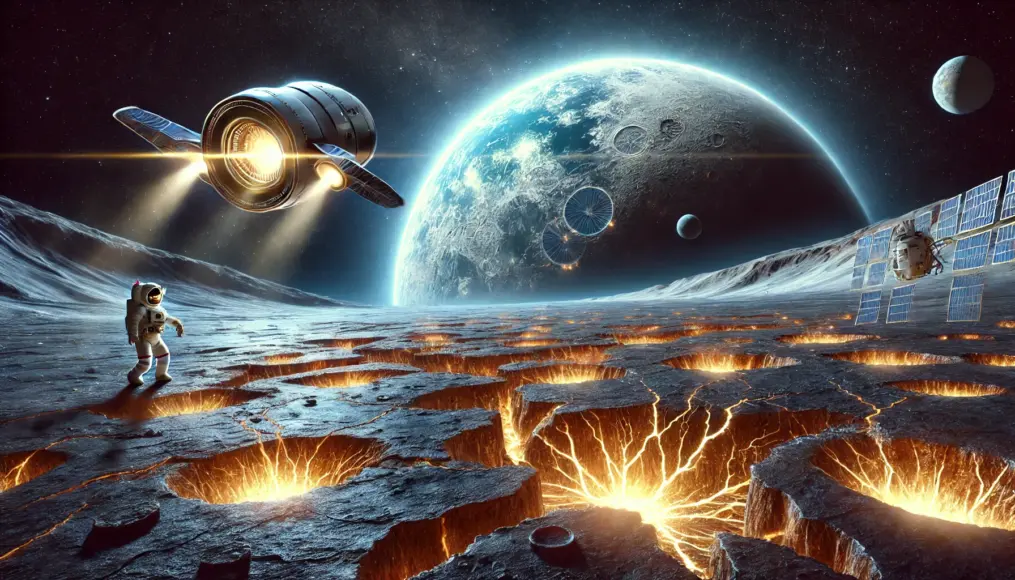
Science and Inspiration for Future Generations
Research on Earth’s inner ocean is not only about scientific advancement but also about inspiring future generations.
By exploring unknown territories, we expand humanity’s possibilities through new discoveries.
Such scientific challenges capture the interest of future generations, driving them to strive for new breakthroughs.
The intersection of science and curiosity is where the future of humanity lies.
The Connection Between Education and Scientific Exploration
Scientific exploration will also significantly impact future education.
Research on Earth’s inner ocean inspires younger generations to pursue unknown fields.
Collaborations between educators and scientists should leverage this discovery to nurture future scientists.
This effort will open new doors for the evolution of humanity.
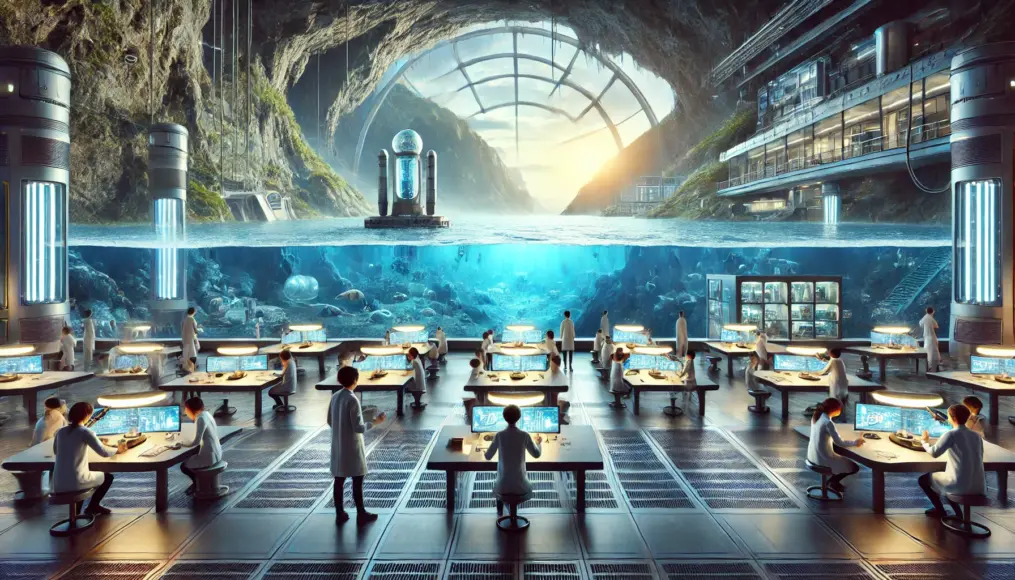
The Future Possibilities Unveiled by the Earth’s Inner Ocean
The discovery of an ocean within the Earth’s interior is a monumental theme that highlights the planet’s untapped potential.
By intertwining scientific perspectives and urban legends, this topic fosters new discoveries and creative inspiration.
It holds profound implications for the future of Earth, extraterrestrial exploration, and the evolution of humanity.
What are your thoughts on the secrets hidden deep within our planet?
Feel free to share your opinions and insights in the comments!

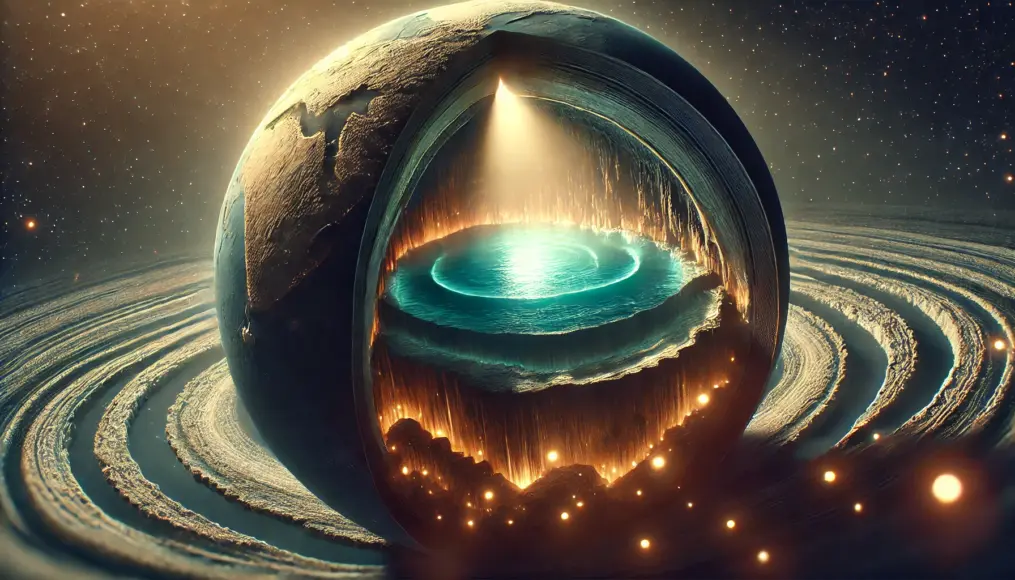


Comment